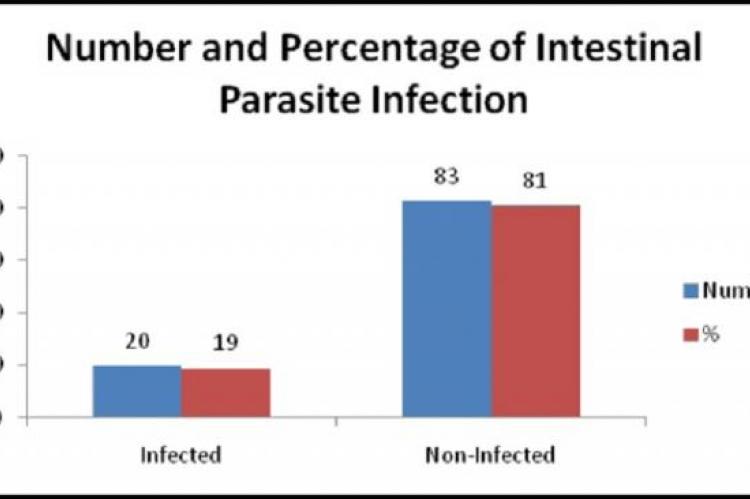Intestinal parasitic infections caused by intestinal helminths and protozoan parasites, are one of the most prevalent infections in humans residing in developing countries. These infections are distributed throughout the World, with high prevalence in low socio-economic communities in the tropic and subtropics. Hence a cross sectional study was conducted from total 103 Mukta kamaiya people from Mukta kamaiya sibir, Shiv-nagar, Dhangadhi from 10th November 2014 to 20th January 2015. Questionnaire was administered to retrieve information on age, sex, history of antiparasitic and toilet facilities. All the fecal samples were examined for the presence of parasites both macroscopically and microscopically. Microscopic examination was done by wet mount (Saline mount and Iodine preparation) method, by concentration method employing formal-ether sedimentation technique and diarrheal samples were also subjected to sucrose flotation method. Almost one in every five (n=20 (19%)) laborers were found to be infected with intestinal parasites and shows the public health problem. The round worm infection was found among three-fifth (60%) followed by H. nana (20%), Giardiasis (15%) and Trichuriasis (1%). Ascariasis was found to be seen in fertilized and non-fertilized ova whereas giardiasis in cyst and trophozoite forms, larva of S. stercularis and ova of H. nana were seen. There was significant difference observed among the types of parasite infection (p-value=0.003). Results of this study indicate lower prevalence of intestinal parasite compared to other parts of Nepal. However, less prevalence compared to that in previous studies may be due to continued public health education, health awareness programs.
View:
- PDF (307.03 KB)


